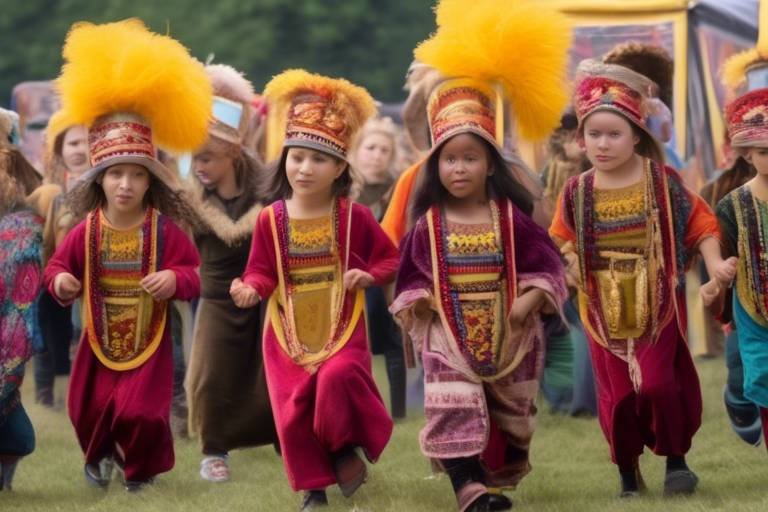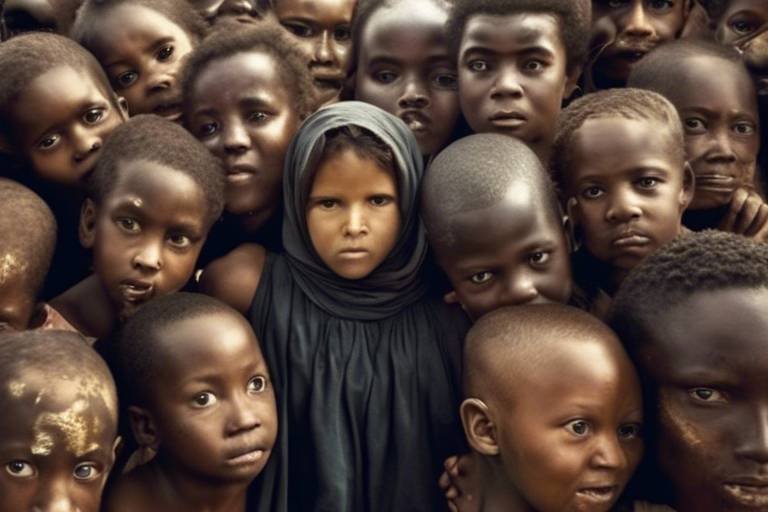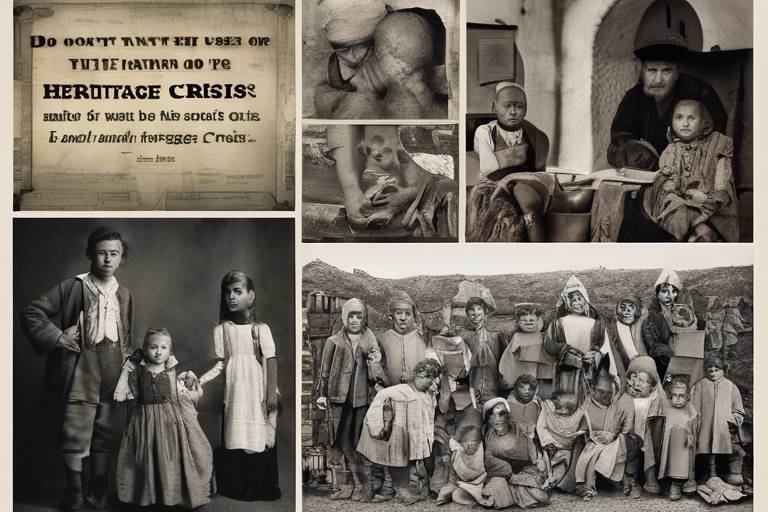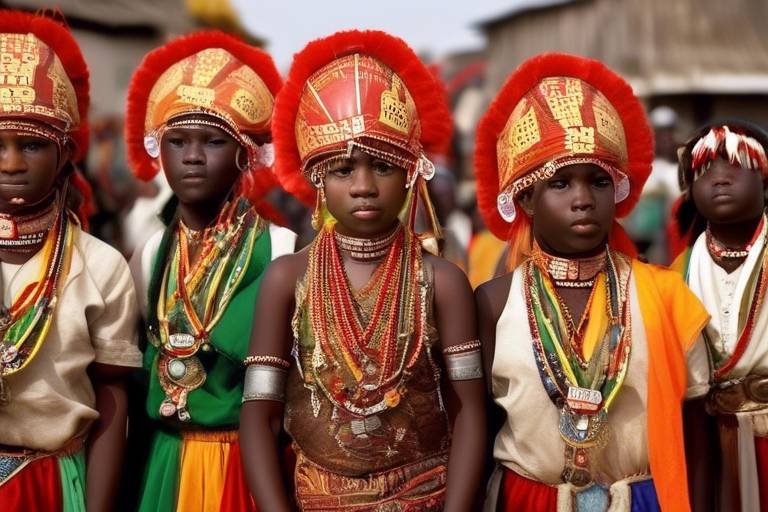How Globalization Impacts Cultural Heritage Preservation
Globalization has a profound impact on the preservation of cultural heritage worldwide. As the world becomes increasingly interconnected, traditional practices, customs, and languages face the risk of being eroded and lost in the face of global influences.
The spread of global trends and values can lead to the homogenization of cultures, where diverse traditions and heritage elements that define the uniqueness of each society are diluted. This process can threaten the rich tapestry of cultural diversity that has evolved over centuries.
Furthermore, the commercialization of cultural artifacts in global markets poses a significant challenge to heritage preservation. The demand for these artifacts can drive their exploitation, leading to their removal from their places of origin and potential loss to future generations.
Language diversity is also at risk due to globalization, with indigenous languages often marginalized in favor of dominant global languages. This trend puts unique linguistic heritage in jeopardy, potentially erasing valuable cultural expressions that are integral to a community's identity.
Despite these challenges, globalization also presents opportunities for cross-cultural exchange. By facilitating interactions between different cultures, globalization can foster mutual understanding and appreciation of diverse cultural heritage, promoting a sense of global interconnectedness.
Advancements in technology play a crucial role in the preservation of cultural heritage in the digital age. Digital tools and platforms offer new ways to safeguard traditional knowledge and artifacts, ensuring their accessibility and longevity for future generations.
Engaging local communities in heritage preservation efforts is essential in mitigating the negative impacts of globalization. By empowering communities to take ownership of their cultural traditions, sustainable preservation practices can be implemented to protect and celebrate cultural heritage.
Effective policies at local, national, and international levels are vital for ensuring sustainable cultural heritage preservation amidst the challenges and opportunities presented by globalization. By establishing clear guidelines and frameworks, policymakers can support the conservation and promotion of diverse cultural heritage for the benefit of present and future generations.

Loss of Traditional Practices
Globalization can lead to the erosion of traditional cultural practices and customs, posing a threat to the preservation of cultural heritage worldwide. As societies become more interconnected, traditional ways of life that have been passed down through generations face the risk of fading away. The rapid spread of Western values and consumerism can overshadow indigenous practices, causing them to be forgotten or abandoned in favor of more modern trends.
Imagine a small community nestled in the mountains, where unique rituals and ceremonies have been performed for centuries. With the influx of global influences, the younger generation may find these traditions outdated or irrelevant, opting instead for practices seen in popular media or on social platforms. The essence of these traditional practices, rooted in history and cultural significance, could be lost forever if not actively preserved and promoted.
Moreover, the commercialization of cultural products can further accelerate the decline of traditional practices. When traditional crafts or art forms are commodified for the global market, the focus shifts from cultural authenticity to profitability. Artisans may alter their techniques or designs to cater to mass consumer demand, compromising the integrity of the original tradition.
One way to address the loss of traditional practices is through education and awareness initiatives within communities. By teaching the younger generation about the importance of their cultural heritage and involving them in the practice of traditional rituals, a sense of pride and ownership can be instilled. Additionally, creating opportunities for cultural exchange programs can help showcase the value of these practices to a wider audience, fostering appreciation and respect for diverse traditions.

Homogenization of Cultures
Globalization has significantly contributed to the homogenization of cultures worldwide. As borders blur and communication becomes instant, the exchange of ideas, values, and practices between different societies intensifies. While this interconnectedness can foster understanding and collaboration, it also poses a risk to the diversity of cultural heritage. Imagine a vibrant tapestry of unique traditions and customs, each thread representing a different culture. Now, picture this tapestry slowly being woven into a single, uniform fabric, where distinct patterns and colors fade into a monotonous sameness. This is the essence of cultural homogenization brought about by globalization.
The influx of Western media, multinational corporations, and global brands has played a significant role in shaping a shared global culture that often overshadows local traditions. Traditional practices that have been passed down through generations face the pressure to conform to mainstream norms, leading to the loss of authenticity and uniqueness. It's like a rich, diverse ecosystem being gradually replaced by a single, dominant species, causing a loss of biodiversity in the cultural landscape. This phenomenon not only threatens the survival of indigenous practices but also diminishes the richness of human experience by erasing the nuances that make each culture special.
Moreover, the standardization of cultural expressions can result in a loss of identity for communities that have long defined themselves through their distinct heritage. Imagine walking through a marketplace where every stall sells the same mass-produced souvenirs, devoid of the craftsmanship and stories that once made them treasures of cultural significance. This commodification of culture not only diminishes the value of traditional artifacts but also undermines the connection between people and their heritage, reducing cultural symbols to mere commodities for consumption.
In the face of cultural homogenization, it becomes crucial to recognize and celebrate the diversity that lies at the heart of human civilization. Preserving unique traditions, languages, and practices is essential not only for maintaining cultural identity but also for fostering mutual respect and appreciation among different communities. By valuing and protecting the distinctiveness of each culture, we can ensure that the global tapestry remains a vibrant mosaic of traditions, each contributing to the collective beauty of humanity.

Commercialization of Artifacts
The commercialization of cultural artifacts is a pressing issue exacerbated by globalization. As these artifacts become commodities in the global market, their intrinsic cultural value often takes a back seat to profit-making motives. The demand for artifacts by collectors, museums, and tourists drives the exploitation of cultural heritage, leading to the potential loss of these items from their original contexts.
Artifacts that hold significant cultural and historical importance are sometimes illegally excavated or stolen to meet the market demand. This illicit trade not only robs communities of their heritage but also fuels a cycle of exploitation and degradation. The commercialization of artifacts can also result in the distortion of their cultural meanings, as they are often stripped of their original context and significance for the sake of commercial appeal.
Moreover, the sale of cultural artifacts can perpetuate power imbalances, where economically disadvantaged communities are coerced into selling their heritage for survival. This further marginalizes these communities and perpetuates a cycle of cultural loss and disempowerment. The commercialization of artifacts thus poses a significant threat to the preservation of cultural heritage and the integrity of diverse societies worldwide.
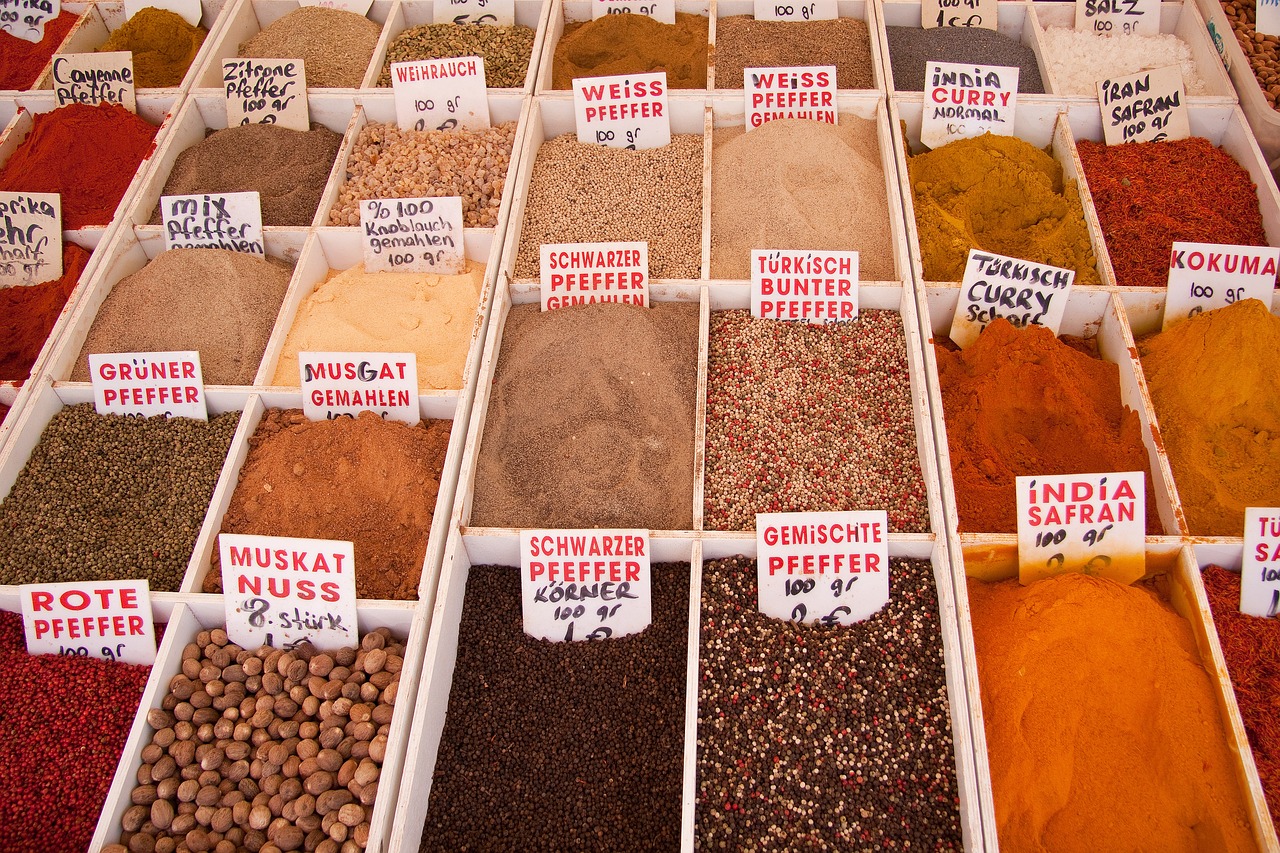
Impact on Language Diversity
Globalization can have a profound impact on the preservation of cultural heritage worldwide. One significant consequence is the loss of traditional practices. As global influences seep into societies, there is a risk of eroding age-old customs and rituals that have been passed down through generations. This poses a serious threat to the authenticity and richness of cultural heritage.
One of the most noticeable effects of globalization on cultural heritage is the . Indigenous languages, which are integral to preserving unique cultural identities, are at risk of marginalization and extinction. As dominant languages spread globally, smaller linguistic communities face the danger of losing their native tongues and with them, centuries of cultural expressions.

Challenges in Conservation Efforts
Preserving cultural heritage in the face of globalization presents a myriad of challenges that require innovative solutions and dedicated efforts. One of the primary obstacles is the funding shortages that often hinder conservation projects. Limited financial resources can impede the proper maintenance of historical sites, the restoration of artifacts, and the documentation of intangible cultural practices. Without adequate funding, heritage preservation efforts may struggle to effectively safeguard valuable elements of cultural heritage.
Another significant challenge is the lack of awareness about the importance of preserving cultural heritage. In a rapidly changing world driven by technological advancements and globalization, traditional practices and customs can be overlooked or undervalued. Educating the public about the significance of cultural heritage and the threats it faces is crucial in garnering support for conservation initiatives.
Conflicting development priorities also pose a challenge to conservation efforts. In many regions, rapid urbanization and infrastructure development may clash with the need to protect historical sites or traditional landscapes. Balancing the demands of economic progress with the imperative to preserve cultural heritage requires careful planning, stakeholder engagement, and sustainable development practices.
Moreover, the fragmentation of cultural heritage due to globalization can complicate conservation efforts. As cultural practices evolve and adapt to changing societal norms, the authenticity and integrity of heritage sites and artifacts may be compromised. Striking a balance between allowing cultural traditions to thrive and maintaining the original essence of heritage elements is a delicate task that conservationists must navigate.
Addressing these challenges requires a multifaceted approach that involves collaboration between governments, local communities, NGOs, and international organizations. By prioritizing sustainable funding mechanisms, raising awareness through education and advocacy, and integrating cultural heritage preservation into broader development agendas, it is possible to overcome the obstacles posed by globalization and ensure the safeguarding of our rich cultural legacy for future generations.

Opportunities for Cross-Cultural Exchange
Globalization, despite its challenges, also presents significant opportunities for cross-cultural exchange. In a world where borders are increasingly blurred, people from different backgrounds have the chance to interact, learn from one another, and appreciate the richness of diverse cultural heritages. This exchange can lead to the sharing of traditions, practices, and values, fostering mutual respect and understanding among communities worldwide.
Through cross-cultural exchange, individuals can broaden their perspectives, challenge stereotypes, and break down barriers that may have existed between different societies. It offers a platform for dialogue and collaboration, where ideas can be exchanged, and new forms of creativity can emerge from the fusion of various cultural influences. This dynamic interaction can spark innovation, inspire artistic expression, and create a sense of unity in diversity.
Moreover, cross-cultural exchange can promote tolerance and empathy, encouraging individuals to embrace differences and celebrate the unique contributions of each culture to the global tapestry of humanity. By engaging in meaningful interactions with people from diverse backgrounds, individuals can develop a sense of interconnectedness and shared humanity, transcending geographical boundaries and cultural divides.
One of the key benefits of cross-cultural exchange is the opportunity to preserve and revitalize endangered cultural practices and traditions. By sharing knowledge and resources, communities can work together to safeguard intangible cultural heritage, ensuring that valuable traditions are passed down to future generations. This collaborative effort not only helps in preserving cultural diversity but also strengthens the resilience of communities in the face of rapid social and economic changes.

Technology and Digital Preservation
Technology plays a pivotal role in the preservation of cultural heritage in the modern age. With the advancement of digital tools and platforms, heritage conservation efforts have found new avenues to safeguard traditional knowledge and artifacts. Digital preservation techniques offer innovative solutions to document, store, and disseminate cultural heritage materials, ensuring their longevity and accessibility for future generations.
One significant aspect of technology in cultural preservation is the creation of digital archives and databases. These repositories serve as virtual libraries, housing a wealth of cultural resources ranging from historical documents to traditional artworks. By digitizing cultural artifacts, institutions can not only protect fragile originals but also make them available for research, education, and public engagement on a global scale.
Moreover, technology facilitates the digitization of intangible cultural heritage, such as oral traditions, music, and performing arts. Through audiovisual recordings and interactive platforms, communities can preserve and share their unique cultural practices, ensuring their continuity in the digital realm. These digital initiatives contribute to the revitalization of endangered traditions and foster intergenerational transmission of cultural knowledge.
Additionally, virtual reality (VR) and augmented reality (AR) technologies offer immersive experiences that bring cultural heritage to life for audiences worldwide. Museums and heritage sites can leverage VR tours and AR applications to provide interactive storytelling and educational experiences, enhancing visitor engagement and appreciation of diverse cultural expressions.
Collaboration between cultural institutions, tech companies, and local communities is essential for the sustainable integration of technology in heritage preservation. By combining traditional conservation practices with digital innovations, stakeholders can ensure the comprehensive safeguarding of cultural heritage in the digital age, preserving the richness and diversity of global cultural traditions for future generations.
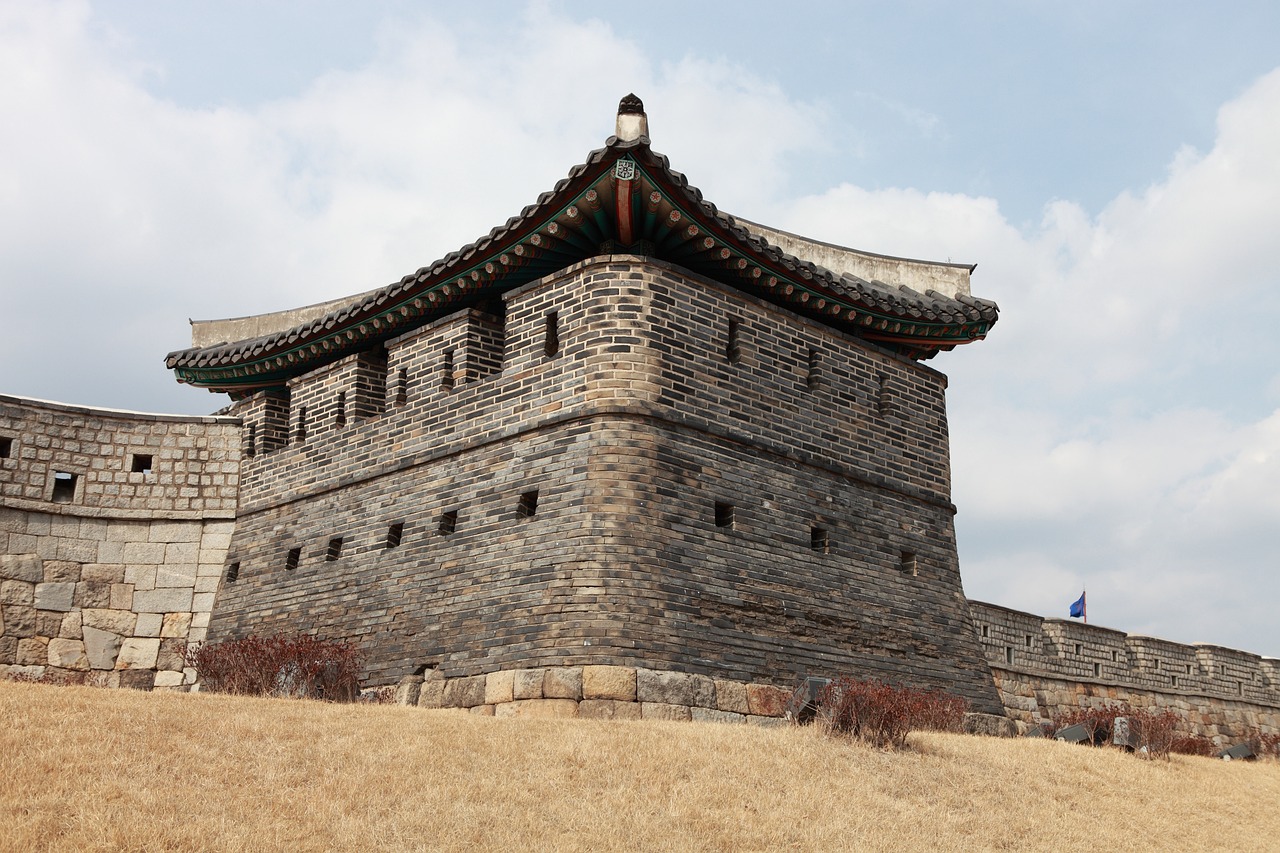
Community Empowerment in Preservation
Community empowerment plays a vital role in the preservation of cultural heritage amidst the challenges posed by globalization. By involving local communities in heritage preservation efforts, a sense of ownership and responsibility is fostered, ensuring the sustainable safeguarding of cultural traditions for future generations.
Empowering communities involves engaging them in decision-making processes regarding the preservation of their heritage. This can include consulting with community members on conservation strategies, seeking their input on the significance of different cultural elements, and involving them in educational programs to raise awareness about the importance of preserving their heritage.
Furthermore, community empowerment in preservation can be facilitated through capacity-building initiatives. By providing training and resources to local community members, they can actively participate in conservation activities, such as traditional craftsmanship, language revitalization, and sustainable tourism development that respects cultural values.
Collaboration between communities, governments, and non-governmental organizations is essential for effective community empowerment in cultural heritage preservation. This multi-stakeholder approach ensures that diverse perspectives are considered, resources are mobilized efficiently, and that heritage preservation efforts are inclusive and sustainable.
Ultimately, community empowerment in preservation not only safeguards cultural heritage from the negative impacts of globalization but also strengthens the social fabric of communities, fostering pride in their cultural identity and creating opportunities for intergenerational knowledge transmission.

Policy Recommendations for Sustainable Preservation
When it comes to ensuring the sustainable preservation of cultural heritage in the face of globalization, effective policy recommendations play a crucial role. These recommendations serve as guidelines and frameworks that govern the protection, conservation, and promotion of diverse cultural traditions and artifacts. By establishing clear policies at the local, national, and international levels, stakeholders can address the challenges posed by globalization and leverage its opportunities to safeguard cultural heritage for future generations.
One key policy recommendation is the implementation of comprehensive legal frameworks that prioritize the protection of cultural heritage. This includes enacting laws that regulate the excavation, export, and trade of cultural artifacts to prevent their illegal trafficking and ensure their return to their places of origin. By establishing robust legal mechanisms, countries can deter the illicit exploitation of cultural heritage and promote ethical practices in the preservation and management of heritage resources.
Furthermore, investing in education and awareness programs is essential for promoting the value of cultural heritage preservation among communities and decision-makers. By integrating cultural heritage education into school curricula and public outreach initiatives, societies can foster a sense of pride and responsibility towards their heritage, encouraging active participation in preservation efforts. Additionally, raising awareness about the importance of cultural diversity and heritage conservation can help combat the negative impacts of globalization on traditional practices and languages.
Collaboration and partnerships between governments, civil society organizations, and indigenous communities are also vital for sustainable preservation. By fostering dialogue and cooperation among various stakeholders, policymakers can develop inclusive strategies that respect the rights and interests of local communities in heritage management. Engaging indigenous groups in decision-making processes and empowering them to take ownership of their cultural heritage can lead to more effective and culturally sensitive preservation initiatives.
Moreover, promoting sustainable tourism practices that respect and support local cultural heritage is essential for balancing economic development with heritage conservation. By encouraging responsible tourism initiatives that benefit local communities and contribute to heritage preservation, policymakers can harness the positive aspects of globalization while mitigating its potential negative impacts on cultural traditions and artifacts.
In conclusion, policy recommendations for sustainable cultural heritage preservation should prioritize legal protection, education, community engagement, and responsible tourism practices. By implementing comprehensive policies that address the challenges and opportunities of globalization, societies can ensure the safeguarding of their diverse cultural heritage for present and future generations to cherish and celebrate.
Frequently Asked Questions
- What are the main challenges faced in preserving cultural heritage in the era of globalization?
In the face of globalization, preserving cultural heritage encounters various challenges such as funding shortages, lack of awareness, and conflicting development priorities. These obstacles can hinder efforts to safeguard and promote traditional practices and artifacts.
- How does globalization impact language diversity and the preservation of indigenous languages?
Globalization can marginalize indigenous languages, putting them at risk of extinction. The dominance of global languages and communication technologies can contribute to the erosion of unique linguistic heritage, threatening the richness of cultural expressions within communities.
- What role does technology play in the preservation of cultural heritage?
Advancements in technology provide new avenues for the digital preservation of cultural heritage. Through digital platforms and tools, traditional knowledge and artifacts can be safeguarded, shared, and accessed by a global audience, ensuring their longevity and cultural significance.
- How can local communities contribute to the sustainable preservation of cultural traditions?
Engaging local communities in heritage preservation efforts is crucial in countering the negative impacts of globalization. By empowering communities to take ownership of their cultural heritage, sustainable preservation practices can be implemented, ensuring the continuity of traditional practices and customs.
- What are the key policy recommendations for ensuring the sustainable preservation of cultural heritage?
Effective policies at local, national, and international levels are essential for sustainable cultural heritage preservation in the face of globalization. These policies should address funding mechanisms, awareness campaigns, community involvement, and the protection of cultural artifacts to ensure the long-term safeguarding of diverse cultural traditions.





